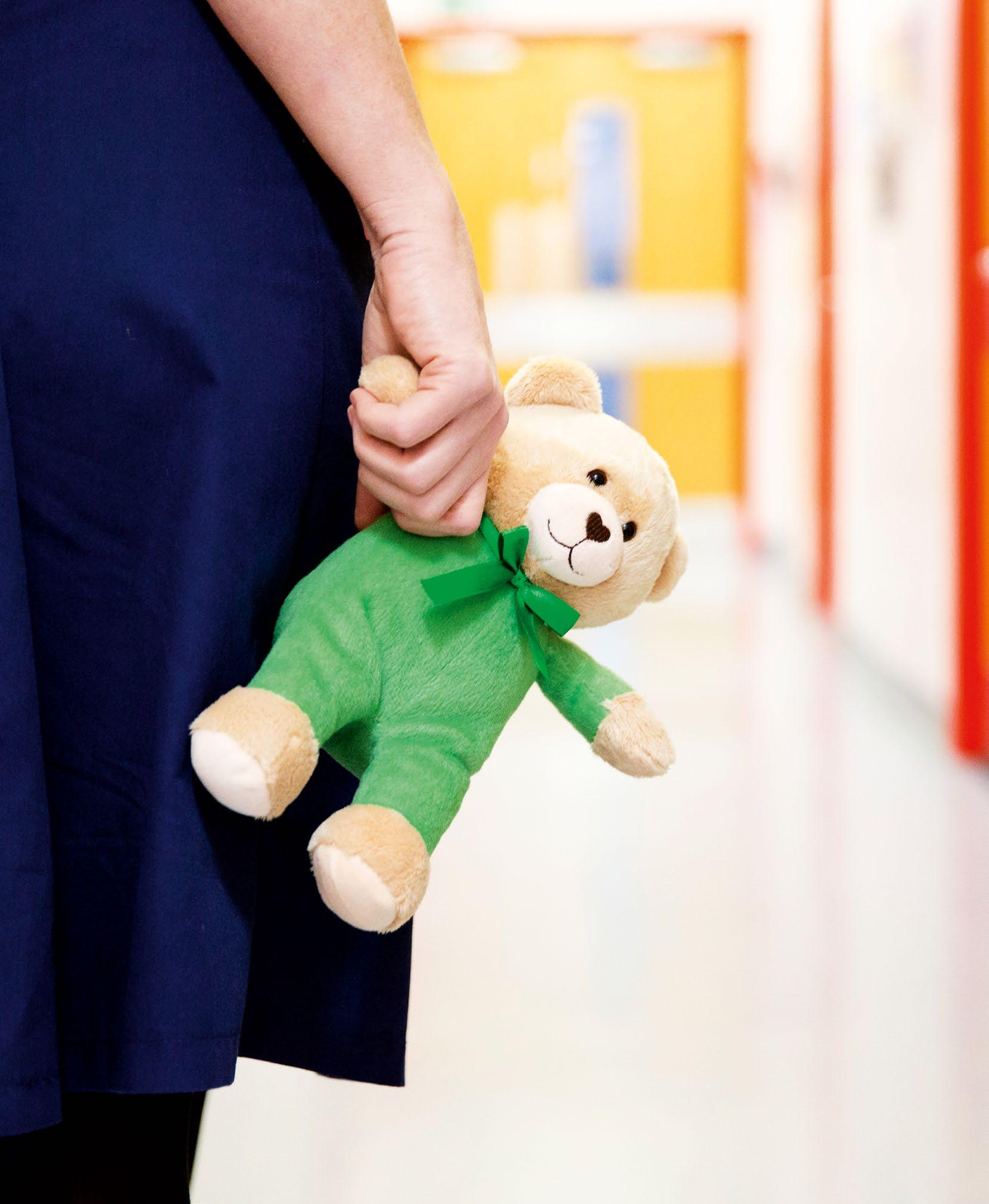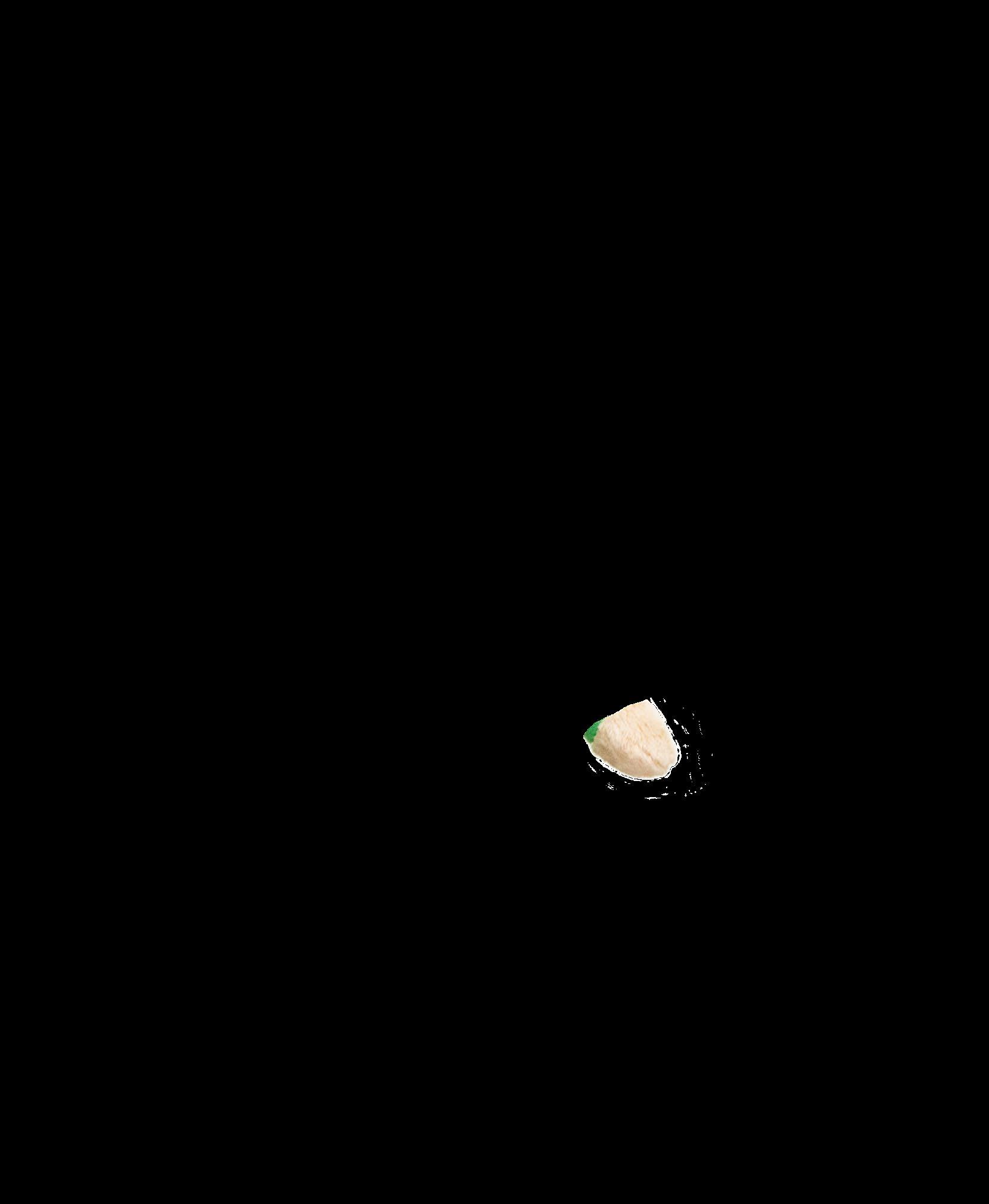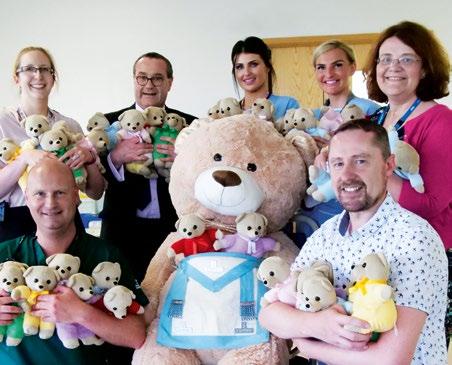
6 minute read
Comforting children
Bear Thanks to an initiative by Freemasons, more than 2.5 million toy bears have been given to children admitted to A&E departments in the UK. Steven Short finds out more about Teddies for Loving Care
necessities

When a child has an accident or gets so ill that a trip to A&E is needed, the last thing on any parent’s mind is packing a bag of things their son or daughter might need at the hospital. They just want to get there – fast. Fortunately, when they do arrive at hospital, a cuddly teddy bear may be there waiting for them.
Teddies for Loving Care (TLC) is an initiative championed by Freemasons across England and Wales that provides everyone’s favourite soft toys to A&E wards to be given to children in distress. ‘Many youngsters will be upset about being in hospital, and the bears help calm children down,’ says Helen Bainbridge, TLC Project Officer at the

Masonic Charitable Foundation, which supports the programme. ‘The bears can also be used to show children what is about to happen to them. If a child needs a bandage or a cast, for example, a doctor or nurse can say, “OK, we’re just going to give teddy a plaster, or bandage up his arm,” and demonstrate the procedure. Then when he or she does it to the child, it’s much less stressful. Or they can “give teddy an injection” so that when a child has one, they’ve already seen it done and know what to expect, and can hold on to something soft and comforting.’
Children can also use the bears to let doctors and nurses know how they are feeling and where they are experiencing pain or discomfort. They may be too upset to communicate with words but can point to teddy’s arm or tummy, for example. Provinces run their own TLC programmes and together have gifted an incredible 2.5 million bears to A&E departments. Some Provinces also donate bears to local Air Ambulance services.
How it all began The idea for the bears began in 2000. The wife of Essex Freemason Ian Simpson had an allergic reaction and was rushed to A&E for life-saving treatment. The couple reflected on how grateful they were for the care received at the hospital and wanted to do something to show their appreciation. ‘Someone suggested sending £50, which is our standard donation,’ recalls Essex Assistant Provincial Grand Master Neil Beverley. ‘But £50 in A&E buys a few sticking plasters and not much else, and we wanted to do more. At the time I was sponsoring something called Trauma Teddies, giving bears to Essex Fire and Rescue services. That gave me the idea that we could donate some teddies.’
A name change later – ‘Trauma in an A&E ward probably isn’t a very useful word’, Neil says – TLC was born, launching in March 2001 across seven Essex hospitals, with Ian as chairman. ‘In the first year we gave away 25,000 teddies. By now we’ve probably given away 400,000.’
Hearing about what was happening in Essex, other Provinces started running their own TLC programmes. Today 47 Provinces across England and Wales have one.
Neil shares a tale of one – or rather two – TLC bear recipients: ‘Two young brothers came in. One had broken his arm. His brother came with him uninjured but totally distraught. They’d been playing ball in the garden and the uninjured brother threw the ball for his brother to catch.

Part of the toolkit: Staff at the Llandudno General Hospital Minor Injury Unit, including Sian Griffiths, above, use the TLC bears to demonstrate procedures and comfort patients

The brother had fallen over and broken his arm. Of course, the uninjured brother thought it was all his fault. In that case both brothers got teddies.’ And it’s not just young hospital visitors who get the cuddly comforters. Colin Grey of the Province of South Wales remembers the first time he visited Morriston Hospital in Swansea to see the bears and their work for himself. ‘A nurse came up to me and said, “Oh I’m very sorry, but one of the dementia patients has taken a bear!” It turns out that the woman, who was normally a bit agitated, had been calm and happy all day, so the nurse was happy too.’
A tool to comfort and distract Many healthcare professionals now consider the bears an essential part of their work toolkit. ‘The TLC bears are a massive comfort to the children who attend A&E, whether they’re in pain, scared or distressed,’ says Dawn Taylor, play specialist at the North Tees and Hartlepool NHS Foundation Trust. ‘They are part of our team; we find they are a great tool to comfort and distract the child, often then allowing us to do our jobs easier. Many a bear has gone home with a plaster cast on – with the child who has one on too.’
The TLC programme also benefits Freemasons. ‘The bears can help change people’s perception of Freemasonry,’ says Duncan Maw, who coordinates the TLC programme in the Province of Durham. ‘For many parents TLC is their first encounter with us. Rather than being the guys with the funny handshakes, we’re the guys who gave little Johnny his favourite bear when he had to go to hospital.’ Durham Province has so far donated 98,000 bears and encourages recipients to upload photos of themselves with their bears to a Facebook page. ‘We’ve got loads of letters from parents about how their kids just wouldn’t go back for follow-up appointments – to have a cast removed or for further treatment – without their TLC teddy,’ Neil says. ‘They associate it with feeling secure and not so frightened.’
To find out more or to donate, contact your local TLC representative through your Province or visit www.teddiesforlovingcare.org.uk




Cuddly toys: From top, Bryan George (left) and David Gibbison of the North Wales TLC programme meet with staff from Llandudno General Hospital; Duncan Maw (back row, second left) coordinates the TLC programme in the Province of Durham; Connan-James McEvoy receives a bear at Llandudno General Hospital’s Minor Injury Unit
Meet Bo, recipient of a TLC bear
What’s your name and how old are you? Bo Bennet. I’m nine. When did you receive a TLC bear? The first time I was given a bear was when I was in A&E with a broken foot. I was only four years old. The second time was when I was six and I cracked my head open when I fell backwards on the lock of a door. How did you feel when you arrived at A&E? When I went to hospital with my cracked head, I felt a bit confused and startled. My head hurt and I was very tired as it was my bedtime. What happened there? A nurse took me into a room and sat me down. She went to the cupboard and pulled out a bear. I felt relieved and happy that I had something to cuddle with while she glued my head back together. How did the bear make you feel? Cuddling the teddy made me less scared. I think I got a bear because cracking your head open when you were only a child like me was quite scary. Without the bear to hold tight I wouldn’t have managed to stay smiling. I concentrated on the bear, not what the nurse was doing to my head.










